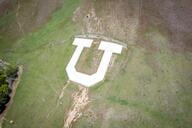You have /5 articles left.
Sign up for a free account or log in.
A young female researcher is working at a field site in a foreign country. She and her supervising professor visit a local town and strike up a conversation with a woman in her native language. Midway through, the professor turns to the graduate student to compliment the local woman’s breasts in English. The comment nags at the student, but at the time she chalks it up to what she calls “hazing” at the work site; after all, her mostly male colleagues make lewd comments about her breasts as well, and sometimes leave pornographic photos on her desk. It’s all a joke.
Except, of course, that it’s not. The woman begins to feel “marginalized” and “under attack,” and her work suffers. When she confronts her professor, things get worse. He says she’s too “sensitive,” and eventually revokes his promise to fund her through graduate school. She makes it through her program, but wonders how many others in similar situations – feeling isolated and without recourse at research outposts – won’t.
Some might find the account incredible, but it’s real. And it’s just one of many such stories that have come across Kathryn B.H. Clancy’s inbox since she started blogging about what it means to be a woman in science, most recently at Scientific American (the above account is detailed here). So even though Clancy’s work as an assistant professor of anthropology at the University of Illinois at Urbana-Champaign centers on evolutionary anthropology and human behavior, these accounts inspired her and several colleagues to study sexual harassment and assault in a previously unexamined milieu: academic science fieldwork.
Much has been written about sexual harassment in academe, particularly in traditionally male-dominated fields such as science and philosophy. And a series of high-profile cases has thrust the issue of on- or near-campus sexual assault involving students into the mainstream news and onto the legislative agenda. But most of those conversations focus on places where students congregate socially, such as fraternity houses. Clancy and her co-authors – Robin G. Nelson, an assistant professor of anthropology at Skidmore College; Julienne N. Rutherford, an assistant professor of women, children and family science at the University of Illinois at Chicago; and Katie Hinde, assistant professor of human evolutionary biology at Harvard University – wanted to study harassment in the sciences away from campus and institutional norms.
Their results, published last month in PLOS ONE, rocked the field. “Survey of Academic Field Experiences (SAFE): Trainees Report Harassment and Assault,” suggested that there were few sexual harassment policies or established codes of conduct publicized or enforced at field sites, and that women trainees were common targets of such behavior. Most surprisingly, perhaps, their harassers were frequently senior collaborators or professors.
“I have gotten a lot of emails from people thanking me and my colleagues for doing the research, saying things like, ‘Finally – my colleague has sexually harassed me for years,’ ” said Clancy. She noted that many fellow scientists have tried reporting harassment. But they often find that complex and competing values at research sites – including maintaining access to the materials and not tainting the data – leave them feeling defeated and victimized anew.
Clancy added: “A lot of people finally feel like someone is going to take them seriously now. And it’s just as validating for us as it is for them.”
Scientists do appear to be taking the study seriously. Joslyn Osten, spokeswoman for the American Anthropological Association, said the group was “very concerned” and directed questions to a prepared statement that referred to the data as “harrowing.” About half of survey respondents were anthropologists. The association issued a “zero tolerance” warning about sexual harassment last year, when Clancy and her colleagues discussed their preliminary findings at an anthropology conference. The association’s Committee on Gender Equity in Anthropology is now developing an educational initiative for members, to prevent harassment and foster effective interventions.
Karen Bales, president of the American Society of Primatologists and a professor of psychology at the University of California at Davis, said her organization doesn't currently have a statement on sexual assault or harassment, since most of its members are academics whose home institutions already have such policies. But she said the study's results were of "great concern, particularly because primatology has traditionally been a field in which women scientists have made outstanding contributions." So more work to be done to ensure that both men and women are able to conduct their research in a "safe environment," she said.
The PLOS ONE study is also helping inform new research. Barbara Mills, a co-investigator and a professor of archeology at the University of Arizona, said her National Science Foundation-funded project seeks to examine why women with doctorates are not applying for NSF archeology grants at the same rates as men. The phenomenon is curious, she said, since as many women as men apply for NSF doctoral dissertation improvement grants and enter competitions for more senior scholars in certain anthropological subfields. And senior women who do apply for research grants are as likely to be funded as men.
Mills said she and her co-investigator, Lynne Goldstein, a professor of anthropology at Michigan State University, were just starting out and had several hypotheses. But the "negative experiences of female archaeologists in the field brought out by the PLOS ONE article may be one of the significant contributing factors," she said.
Some 666 people, mostly women (78 percent), completed the study’s online survey, which was promoted through various social media and other platforms. Respondents were students and faculty members representing 32 different disciplines – but almost half identified themselves as anthropologists, for whom field work is particularly important. Nearly three-fourths of respondents said they’d witnessed or been told about other site researchers making inappropriate remarks. Some 64 percent said they’d personally experienced sexual harassment, such as sexual or otherwise inappropriate remarks about their appearance. And some 20 percent said they’d experienced sexual assault, defined by the study as unwanted sexual contact of any kind, including rape.
Those who reported sexual harassment and assault experiences were overwhelmingly trainees, from high-schoolers to postdoctoral fellows; women were 3.5 times more likely to report harassment than men.
Among female respondents, power dynamics appeared to be in play; half of their harassment experiences involved senior members of their research teams. Only a small percentage of reports involved local residents. For men, harassment complaints more often involved peers.
Despite – or perhaps related to – those figures, respondents had “limited awareness” of workplace policies regarding harassment and assault and means of reporting it. Fewer than one-quarter of respondents said they remembered there being a code of conduct at field sites where they’d worked.
The anthropological association and many other professional organizations have broad policies condemning sexual harassment and encouraging collegial behavior. But Clancy said clearer, more enforceable guidelines are needed in the field, where there’s a sense of campus norms being relaxed, and a pervasive “What happens in Vegas" attitude.
“A phrase that we heard is, ‘What happens in the field stays in the field,’ independently, from different respondents,” Clancy said, repeating the finding that victims were most often trainees. “So to me what this is saying is that scientists are like everybody else – that power imbalances often motivate poor behaviors.”
Much of the talk about the study described an apparent disconnect between fieldwork conditions for women and national initiatives to get more girls and young women involved in the sciences. Some attributed the so-called “leaky” STEM (science, technology, engineering and math) pipeline -- in which women disproportionately drop out on the way to a degree -- to the culture of harassment described in the survey and write-in section.
Richard A. Weibl, chief learning officer for the Association for Women in Science, said the study illuminates “gender challenges in STEM.” So much energy has been investing in getting girls enthusiastic about science and engineering, he said, “that those efforts have sucked all the air out of the conversation about the hostile climate those girls will experience at university and in the workforce.”
He added, via email: “Of course, the visual of the girls coding robots and at the bench in lab coat and goggles is much more attractive than showing a professor sexually assaulting a graduate student while at a conference or while working in the field.”
Weibl said data suggest that science loses many women in part because of the kinds of experiences described in the report – as well as the “failure of individuals and institutions to sanction those who do the harassment.”
The anthropological association promotes professional behavior and “respectful relationships” in its Statement of Ethics: Code of Professional Responsibility. But the association, like others, says it has no adjudicatory authority over members’ conduct.
Other organizations have come a bit closer to enforcing anti-harassment policies. Jeffrey H. Altschul, president of the Society for American Archaeology, said via email that the association does not certify or endorse field schools. But it sponsors an organization called the Register of Professional Archeologists, which does certify schools. Association sites must be run by a registered archaeologist who has signed on to a specific code of ethics; the code includes compliance with nondiscrimination laws.
Altschul said failure to meet the code “exposes the individual to the grievance process, which can include expulsion.”
Joan T. Schmelz, a professor of astronomy and physics at the University of Memphis and chair of the American Astronomical Society's Committee on the Status of Women in Astronomy, has blogged about being a woman in the field, including about being harassed by a professor. She said there's a saying in astronomy that illustrates the problems it shares with other fields involving off-campus research: “What happens in the observatory stays in the observatory.”
Previously, the association had a "no tolerance" policy against sexual harassment, Schmelz said. But that alone didn't curb misconduct. So the association developed a lengthy anti-harassment policy, which includes procedures for reporting, investigation and possible disciplinary action. It also published a letter to observatory managers asking them to enforce the policy, via verbal warnings to possible “ejection” from the facility.
Schmelz said the association is also working on additional best practices regarding harassment. One such idea is having those who report it but who fear retaliation put their complaints into an “information escrow account” that will become live if and when a serial offender appears to be operating in the discipline.
Along with praise, Clancy’s study has drawn criticism; many have said the study’s design skews toward the disgruntled. The study acknowledges its limitation in PLOS ONE, and Clancy said the idea was never to discern the exact incidence of sexual harassment in the field. Rather, she said, it aimed to flag a critical issue and spark important conversations.
Similarly, Clancy said the study aims to describe a problem rather than prescribe solutions. But she said anti-harassment cultures at field sites are built from the top down, with senior researchers setting positive examples. Beyond that, she said, behavioral expectations and avenues for reporting should be expressly discussed with trainees and faculty at sites. And because of concerns about retaliation, these locations should have ombudsmen who are not mandated reporters. Professors who won't be traveling with their students also may contact site managers to ask about sexual assault and harassment policies, indicating their importance ahead of time, she said.
Clancy said she and her team are working on a second paper focusing on the qualitative data collected during the study and interviews, to glean more insight into what makes some sites safe and others less so.
But so far, she said, "the most powerful finding to my mind is that most of the targets were trainees, and most of the abusers were [senior researchers]. It's so often vertical, so we need to think about hierarchy and power here."





